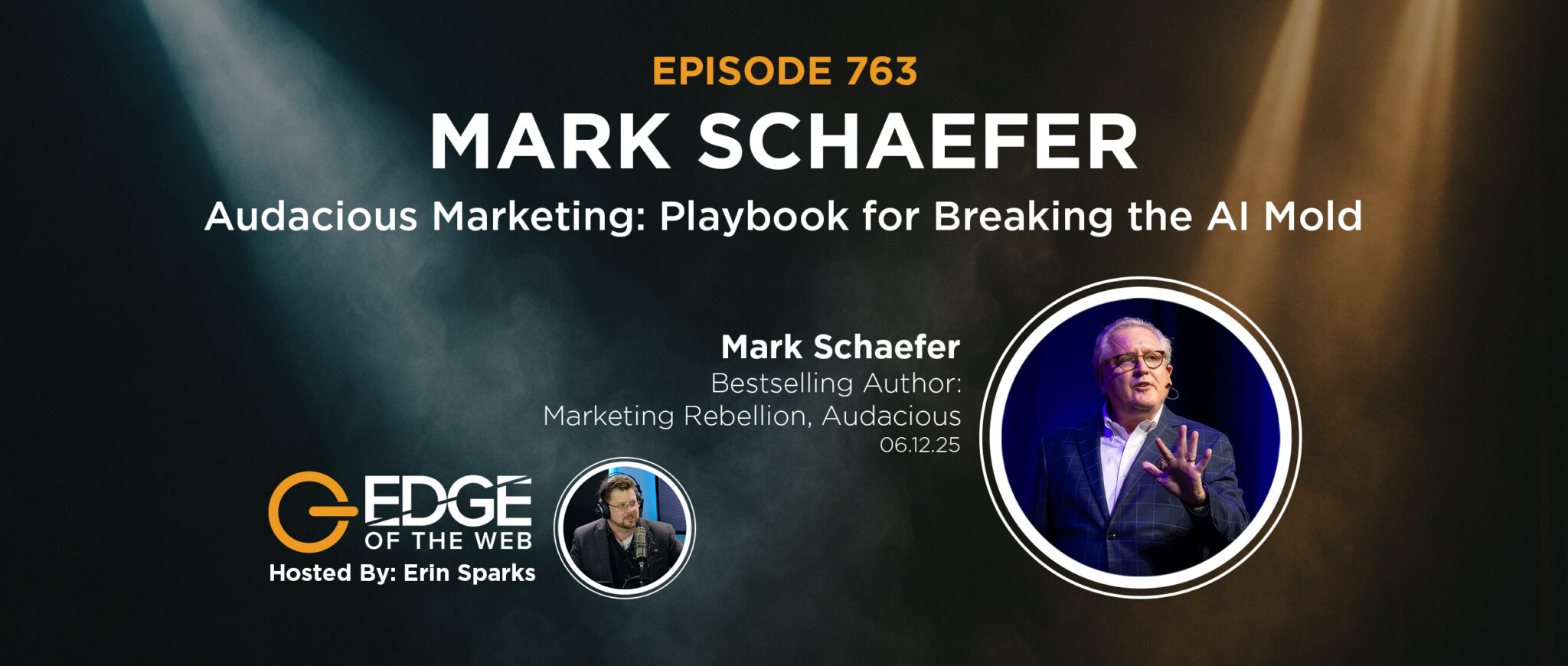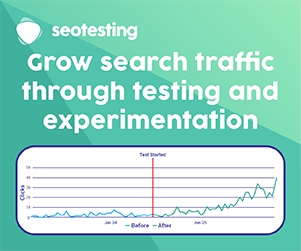News from the EDGE: Week of December 28, 2020
While we’re all very much looking forward to putting the year 2020 firmly in the rearview mirror, we have one last digital marketing news roundup to send your way. Host Erin Sparks and Creative Studio Producer Jacob Mann along with our regular industry expert guest Mordy Oberstein, Wix’s SEO Liaison, did a deep dive into some of the latest headlines in this year-end news roundup from the award-winning EDGE of the Web podcast:
Google Search Console brings back request indexing tool
From Barry Schwartz on Search Engine Land we learn that Google Search Console brings back request indexing tool. Google has reenabled the request indexing tool, within the URL Inspection tool in Google Search Console. The tool was disabled on October 14, 2020—69 days ago—and it was expected to come back before the holiday shopping season. That came and passed, but it is now back.
- Erin Sparks: We were supposed to get this thing back before the holiday shopping season, which didn’t happen, but now it’s finally back.
- Mordy Oberstein: I’m trying not to get choked up about this. And while it’s back, I think it’s also a bit backed up because I immediately requested a reindexing I needed and it hasn’t happened yet. What a cruel joke if they brought it back but it doesn’t do anything. But seriously, just be aware that your recrawl might not happen right away.
- Erin Sparks: Maybe they’re rationing it out. Actually, there already is some kind of limit on how many times you can request reindexing of a page in a certain time-period, like over a 24-hour period. Or maybe we should just all back our trucks up and really dump a ton of reindexing requests on them and see what happens.
Google: Why You See Portions of Your Site Go Up or Down After Algorithm Updates
A second headline covered by Barry Schwartz but this time on Search Engine Roundtable is Google: Why You See Portions Of Your Site Go Up Or Down After Algorithm Updates. Google’s John Mueller said in a video hangout last week at the 37:02 mark that you can see parts or portions of your web site go up or down after an algorithm update. The reason for that is that some of Google’s algorithms not only try to look at the “bigger picture of the website” but also “look at smaller parts of a website,” he said.
- Erin Sparks: This was a good insight about the way the Google algorithm looks at things, which can be related slices of a site and not always just the whole thing.
- Mordy Oberstein: Yes, and a lot of SEOs still don’t get this. Google doesn’t just look at the page level, it’s looking at the whole domain. So you might see you took a hit for such-and-such keywords but stayed the same for other keywords, and those different groupings of keywords probably aren’t dialed in only on one or a few pages. So the way this plays out is if you have a website about auto repair, but you decide to post some content about growing herbs, Google’s going to say the herb content doesn’t really fit your domain and isn’t going to rank you for it. There is a logic to it.
- Erin Sparks: And there were sites that were just filling up with all kinds of different content just to get traffic but then they took a big hit because Google wants there to be a coherent approach in a domain.
- Mordy Obersten: So what Google is doing with everything, such as passage indexing, and the structure of the SERPs, and algorithm updates, is to force sites to write really specific content that aligns with the domain’s core concerns.
Brand reputation and the impact of Google SERP selections
From JR Oakes on Search Engine Land comes some pretty mind-blowing information about Brand reputation and the impact of Google SERP selections. How Google treats company navigational brand searches and the impact they can have on consumer perceptions, especially the People Also Ask (PAA) feature on Google SERPs.
- Mordy Oberstein: The PAA comes up as a feature when you do a search, so there’ll be a place on the SERP with usually around four questions that relate to your query. Each of those questions is an expandable tab where you’ll find a little snippet of content that answers that question with a URL to the source page. And as you expand those question tabs, more of them will dynamically load. It’s an endless series of questions. And yes, many of the questions and answers are about buying something related to the query.
- Erin Sparks: It’s also intent-based because it responds to what you interact with, because if you’re clicking on those it might mean one or more of those questions get closer to what you’re really inquiring about. And intent is important! So JR started looking through PAA data for the Fortune 500. And when you start looking at the PAAs that come up, some of them seem to raise negative sentiment. Like for Walmart there’s this one: Is Walmart owned by China?
- Mordy Oberstein: So if you’re a Fortune 500 company, you’re incredibly successful. So why would one of the PAAs that comes up for one of these companies be this: Is XYZ company legit? It seems questionable that this would be one of the top questions being asked about a Fortune 500 company.
- Erin Sparks: So are these PAAs biased somehow towards what Google thinks is highly clickable, even if it’s just clickbait?
- Mordy Oberstein: Well, the results are definitely odd with PAAs, but I find it hard to believe there’s INTENT from Google about it, nefarious or otherwise. It’s definitely not good optics for Google because it just looks really bad and really biased, whether it really is or isn’t. But if you compare the PAAs in Google for the company CDW, which contain a lot of negative sentiment questions to the PAAs that come up in a Bing search, the Bing PAAs are much less negative. So it does raise the question of what the heck is Google doing or not doing to shape those PAAs?
- Erin Sparks: And if you’re just doing a general brand search without any specific intent, shouldn’t the PAAs be very general as well, like without sentiment whether good or bad?
- Mordy Oberstein: And that’s what is so mystifying about these negative PAAs. How does Google think they’re helping a general understanding of that general brand search? And if you’re on the side of people who think Google should be regulated, this kind of thing is adding a lot of fuel to the fire. And if you’re a company getting negative-sentiment PAAs, there is literally nothing you can do about it. Nothing at all.
Connect with Erin Sparks, Host of EDGE of the Web and owner of Site Strategics
Twitter: @ErinSparks (https://twitter.com/erinsparks)
LinkedIn: https://www.linkedin.com/in/erinsparks/
Connect with Mordy Oberstein, Wix’s SEO Liaison
Twitter: @MordyOberstein (https://twitter.com/MordyOberstein)
LinkedIn: https://www.linkedin.com/in/mordy-oberstein-12551715/



 –>
–>


















